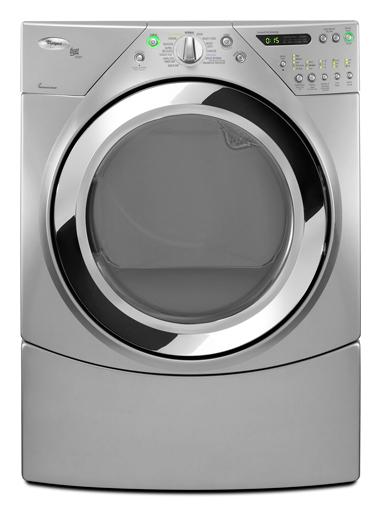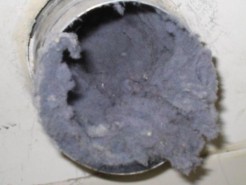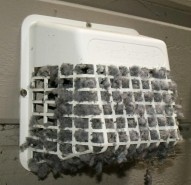 One appliance that gets a lot of use is a dryer, because it saves time doing the laundry. It is important to take care of your appliance properly so that it can last a long time. The best way to keep yourself from having to purchase a new appliance too often is to take care of the one you already have. Here are some preventative maintenance tips that you should follow to make sure you can extend the life of your machine.
One appliance that gets a lot of use is a dryer, because it saves time doing the laundry. It is important to take care of your appliance properly so that it can last a long time. The best way to keep yourself from having to purchase a new appliance too often is to take care of the one you already have. Here are some preventative maintenance tips that you should follow to make sure you can extend the life of your machine.
One thing you can do right away to extend the life of this appliance is to clean out its lint filter in between doing loads of laundry. If the filter is torn, it must be replaced immediately.
 Periodically, disconnect the vent hose and clean out the whole vent system of the dryer. This is extremely necessary if the vent hose of this appliance goes through an interior wall of your house and then all the way up to the roof. It is equally important if the vent hose takes a complicated path through the house to the exterior.
Periodically, disconnect the vent hose and clean out the whole vent system of the dryer. This is extremely necessary if the vent hose of this appliance goes through an interior wall of your house and then all the way up to the roof. It is equally important if the vent hose takes a complicated path through the house to the exterior.
Keeping your dryer entirely lint free is easy, improves energy efficiency, and helps prevent lint fires.
 The vent pipe from your dryer should be inspected, from the dryer to the outside of your house (where the flap door is that opens when the dryer is on and venting). It should be cleaned of lint and dust and properly attached with no holes or cracks. If it is damaged, it must be replaced or repaired properly.
The vent pipe from your dryer should be inspected, from the dryer to the outside of your house (where the flap door is that opens when the dryer is on and venting). It should be cleaned of lint and dust and properly attached with no holes or cracks. If it is damaged, it must be replaced or repaired properly.
Clean the floor under, behind, and around your dryer to remove lint and dirt that naturally collects. You will need to safely move your dryer to do this properly.
- Follow the proper loading procedure and machine operation.
- Never overload the dryer.
- Make sure your clean the dryer lint filter after every load.
- If the clothes are not getting dry:
- Make sure the dryer has not pushed back against the rear exhaust duct causing an air flow restriction.
- Make sure the clothes are coming out of the washer spun damp-dry. If the washer is not spinning the clothes damp-dry, the dryer will not dry the clothes in a normal amount of time.
Make sure your dryer’s feet are level on the ground as this balances the dryer properly and will extend the life of the appliance.
If you have a gas dryer, the burner should be cleaned and inspected according to manufacturer’s instructions.
Dryer Venting Issues
THE BAD VENT WARNING SIGNS
- Clothes are taking more than one cycle to dry, especially jeans & towels.
- No lint visible on lint screen.
- Dryer repeatedly stops during a cycle.
- Clothes have moldy smell after dry cycle.
- Clothes are very hot after a dry cycle.
- The top of your dryer is hot to the touch while running.
- There is excess lint left on your clothing.
THE TECHNICIAN KNOWS – How much time is spent waiting for clothes to dry?
- 90% of all appliance fires are dryer related.
- Clogged dryer vents run much hotter and longer.
- Improper venting will cause your dryer to malfunction.
- A plugged dryer vent will create an enormous amount of dust.
- Dryer vent cleaning will improve the air quality in your home.
- Excess heat created by poor venting can ruin your clothes.
Why is venting so important to the performance of a dryer?
MOISTURE
One of the most important functions of a dryer is the elimination of moisture recovered during the heating of damp clothing. This moisture is held in the warm air produced by the dryer as humidity, and is normally expelled to the outdoors through the dryer’s vent. If this air cannot be adequately removed, poor drying will result.
This moisture can also condense into pools of water in the dryer vent, eventually leaking out. Any moisture accumulation inside the dryer ducting is a sign of poor venting which should be looked into.
HEAT
The heat is another important function of a dryer. Many current dryer models have a ‘one-time’, non-resettable, thermal fuse or safety. These safety devices are designed to “fail” or “fault out” should the dryer’s vent not be installed properly, or if it becomes restricted. Once this happens, the dryer will no longer heat and will require the part to be replaced to correct the condition. On some dryer designs, failure of one of these thermal fuses will totally stop the dryer operation altogether.
On older models without one of these thermal safeties, poor venting can cause the dryer to cycle on its safety thermostat, instead of the temperature control thermostat. This usually contributes to poor drying and can cause overheating. On some models, the malfunctioning of the timer operation affects some cycles.
If these suggested tips do not solve the problem, call Advanced Appliance Services at (912) 756-4474 for fast professional appliance repair.
Sited: Fleet Appliance Corp., Bob Dougherty, Landers Appliance site, 4/2012